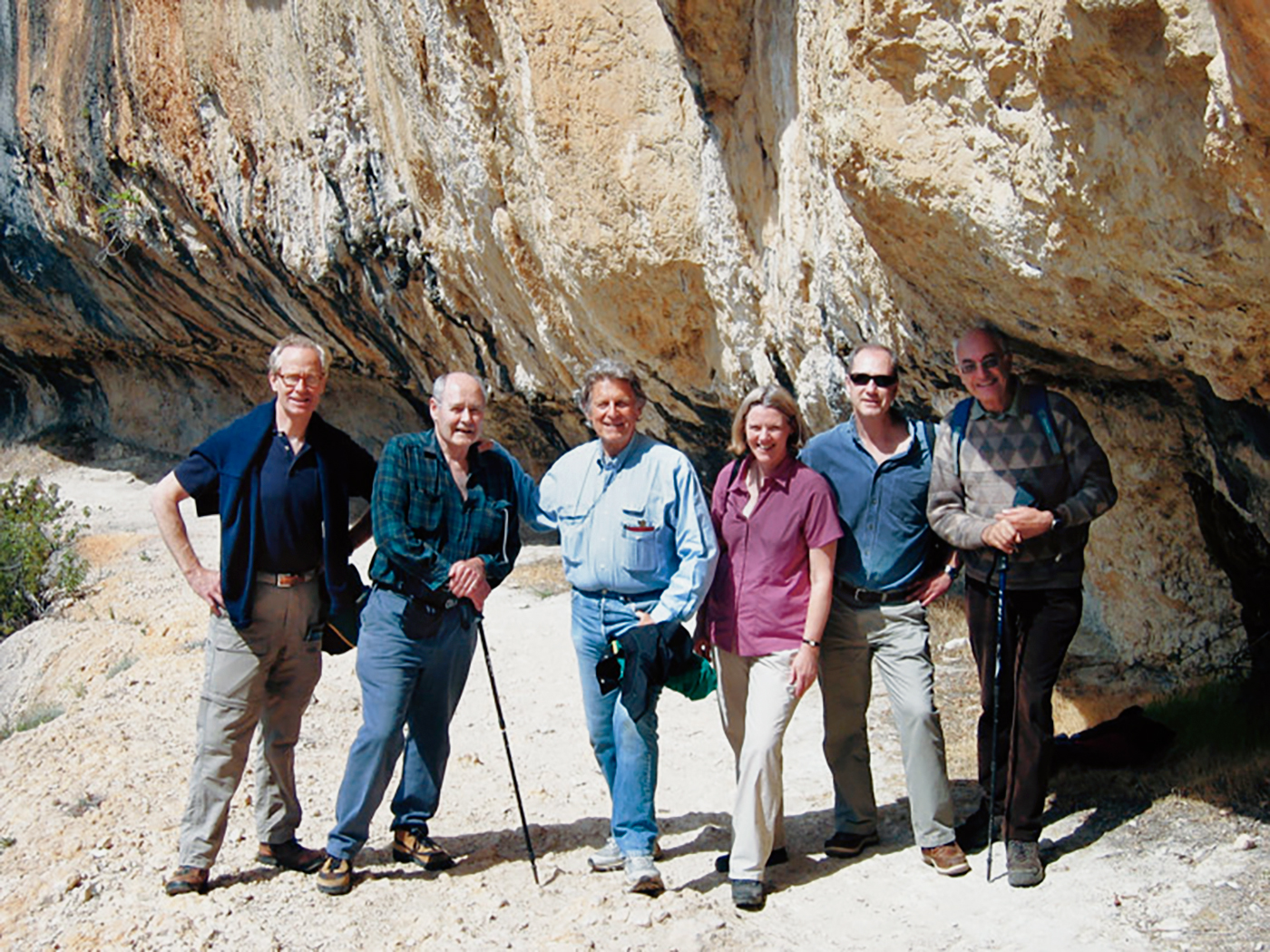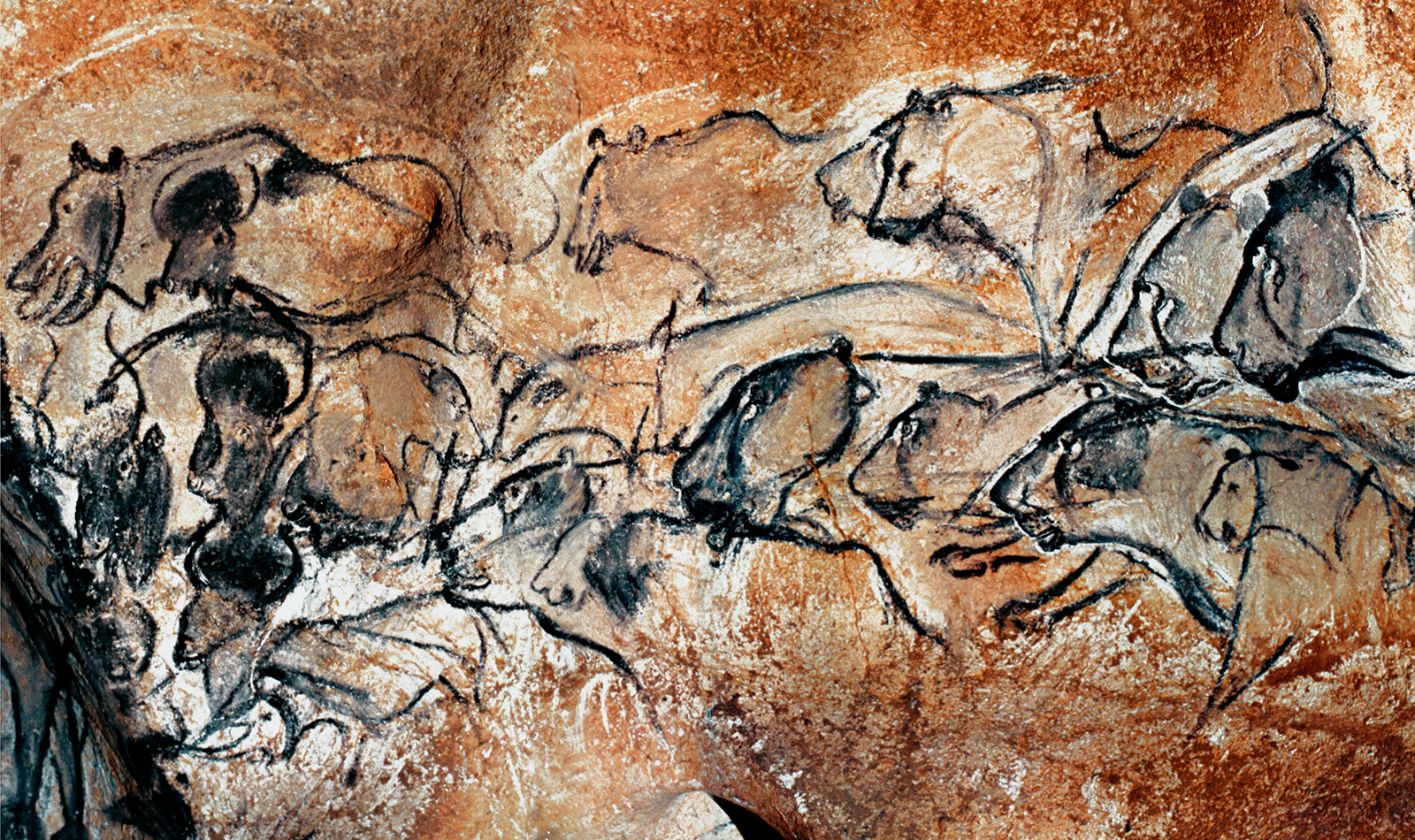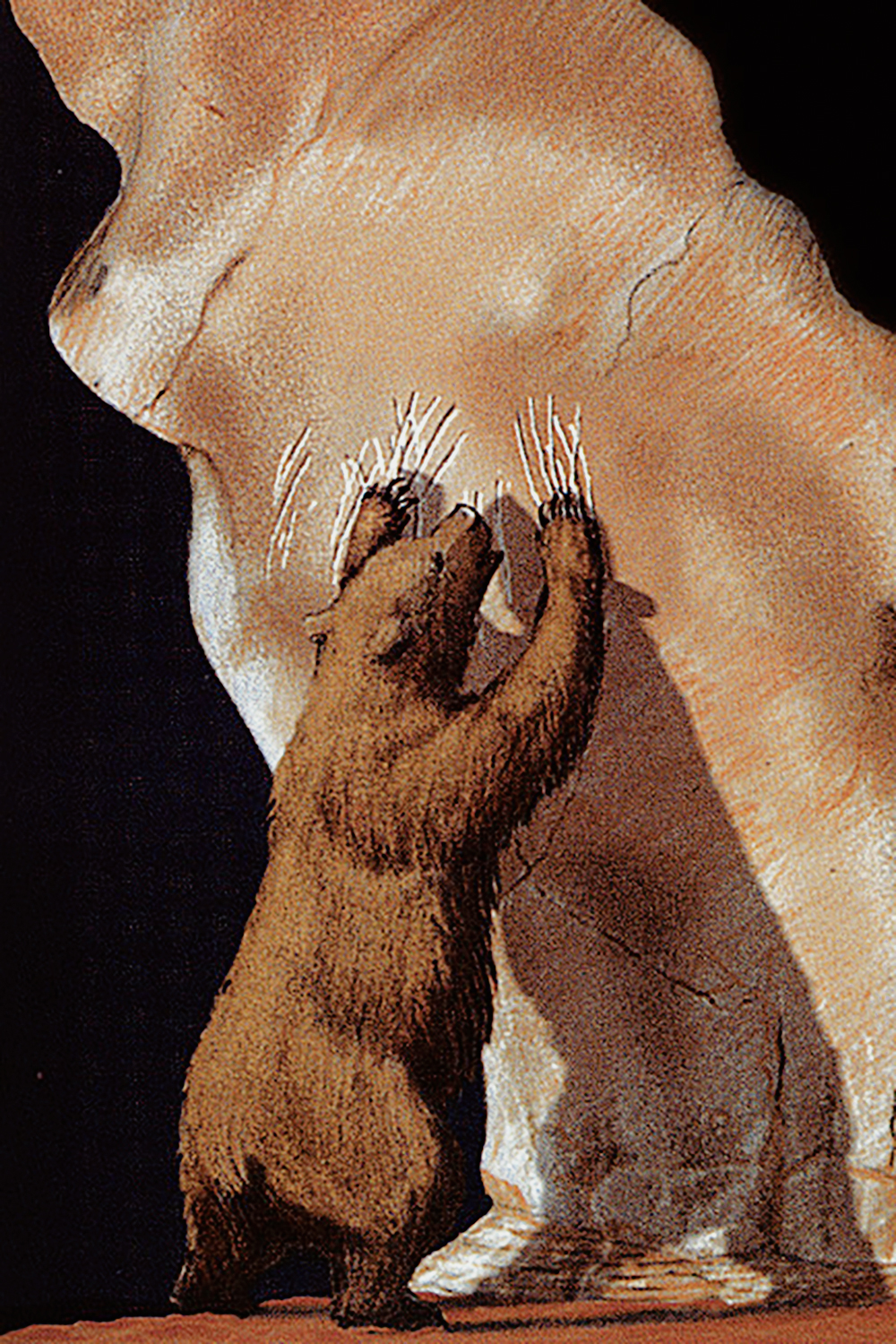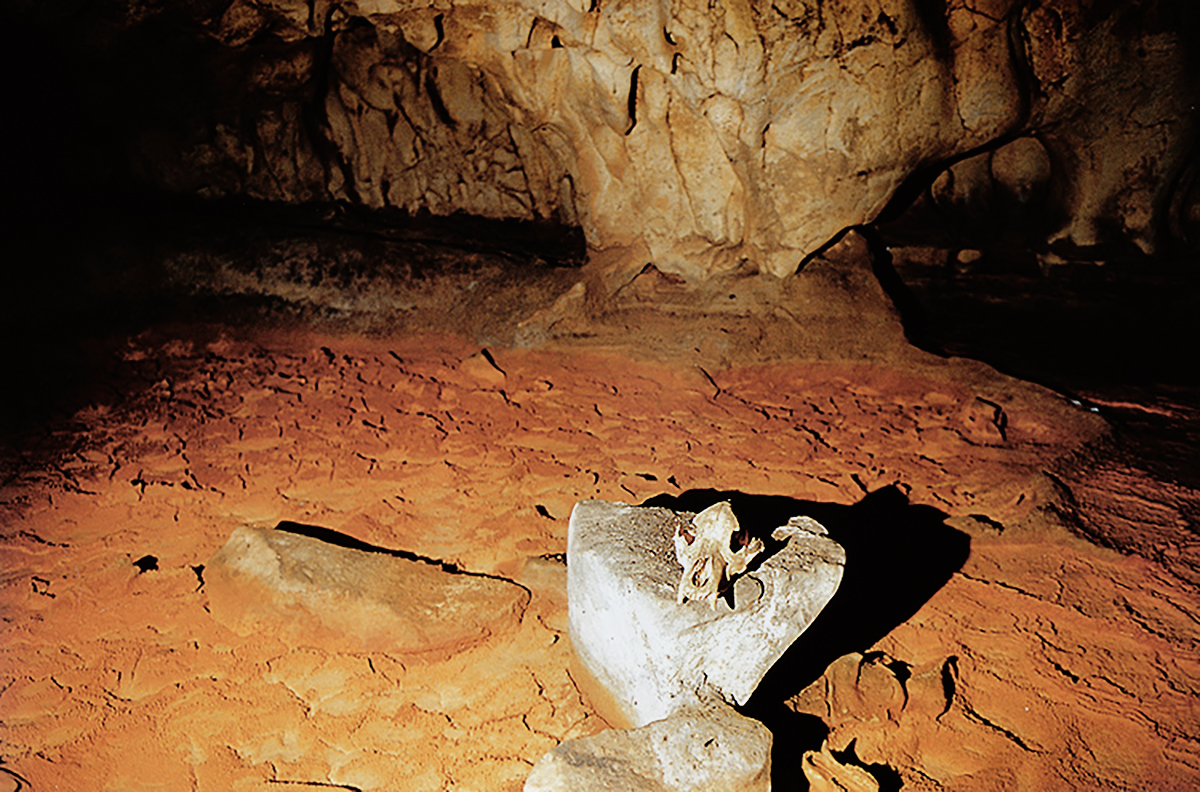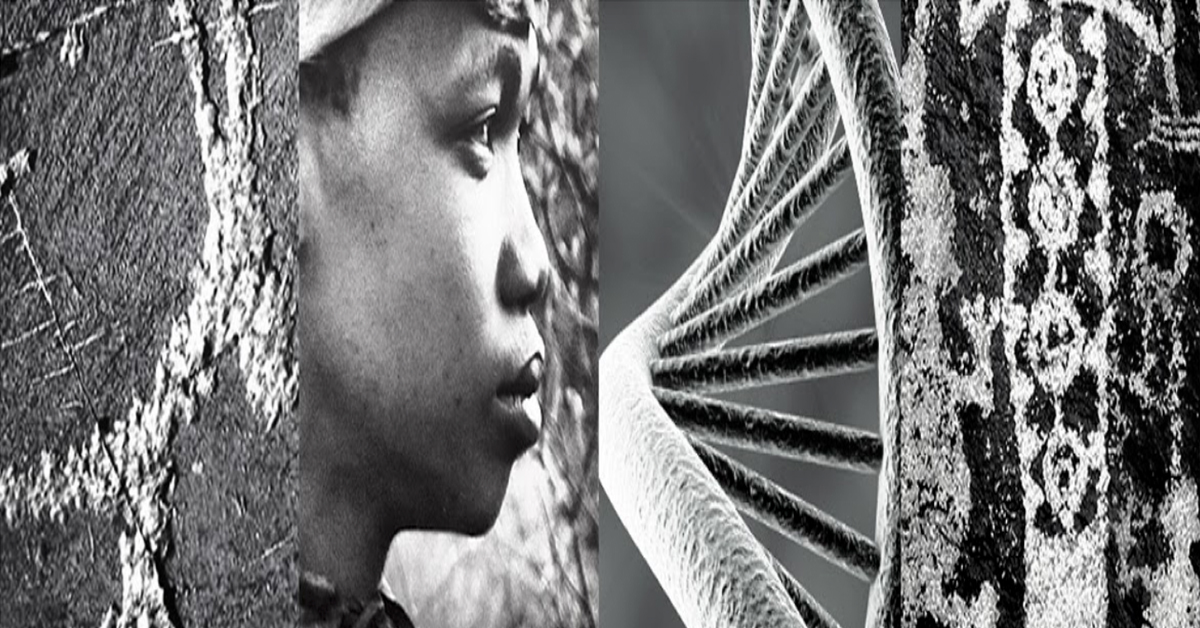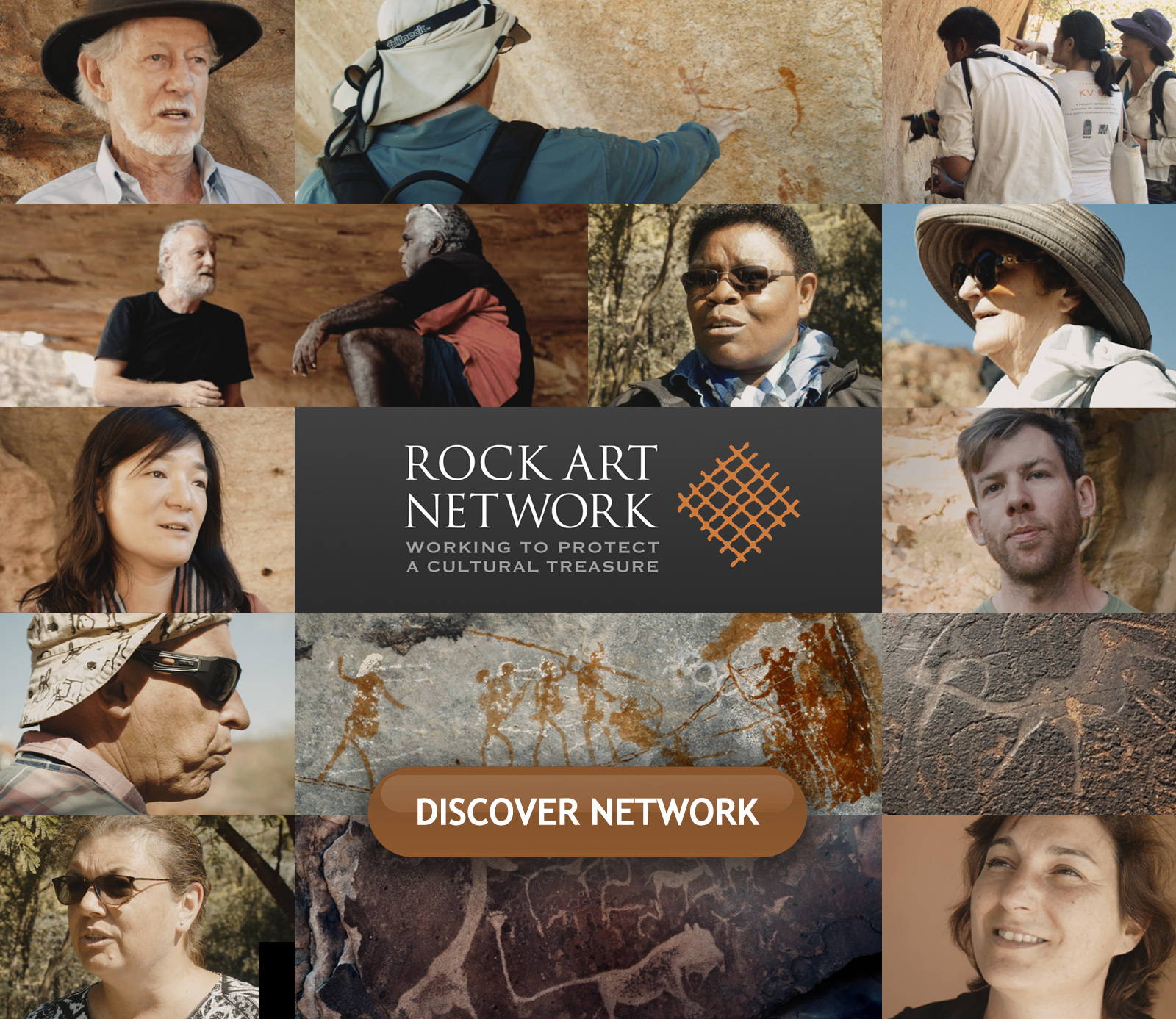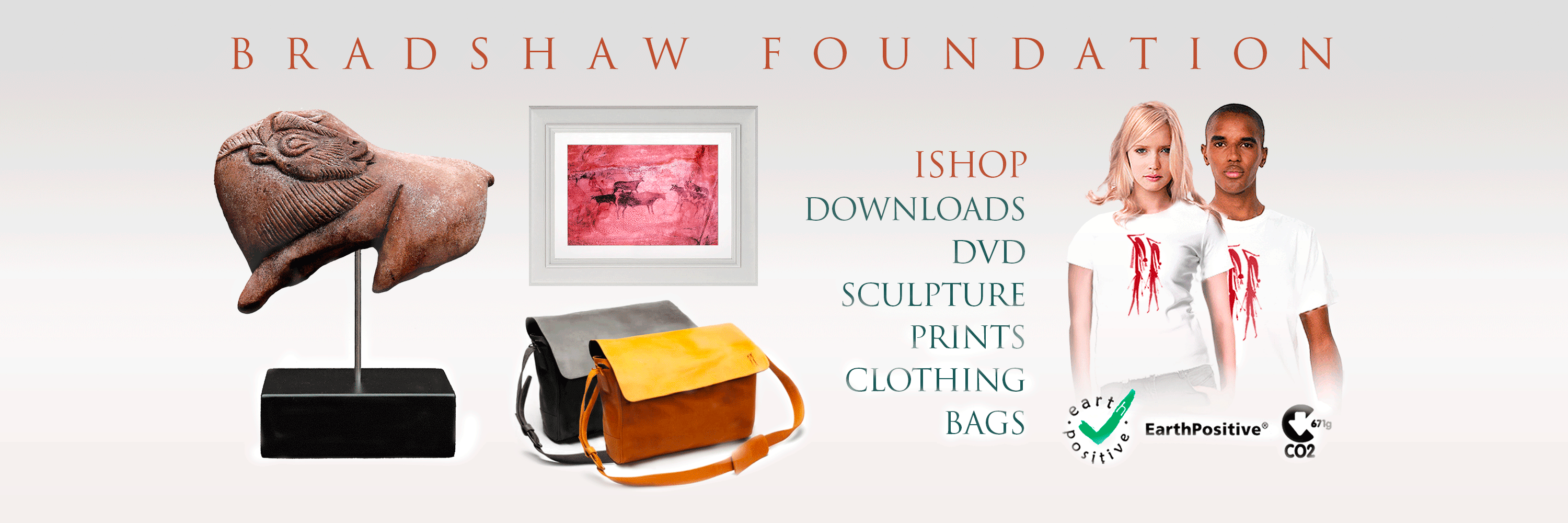
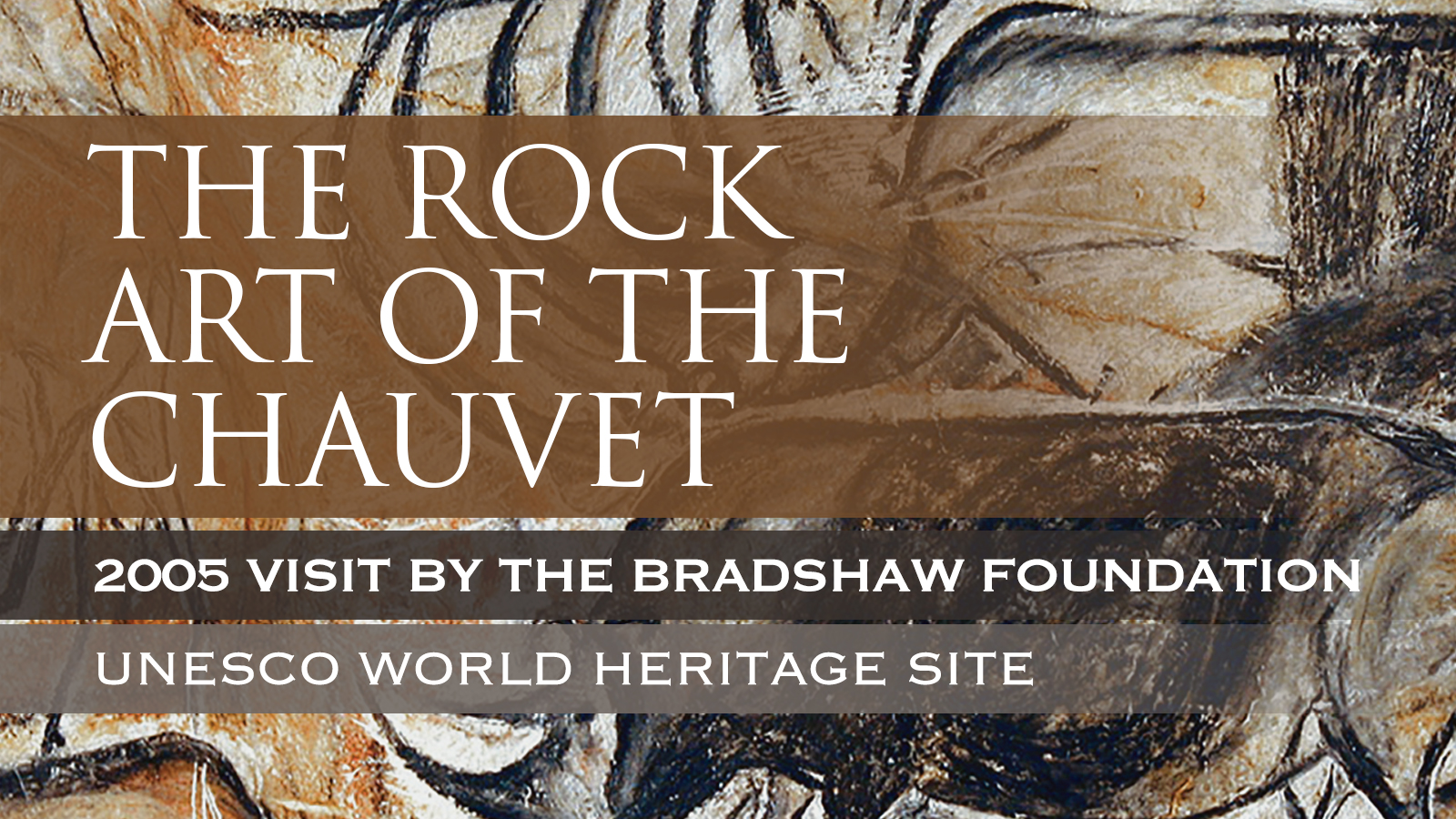
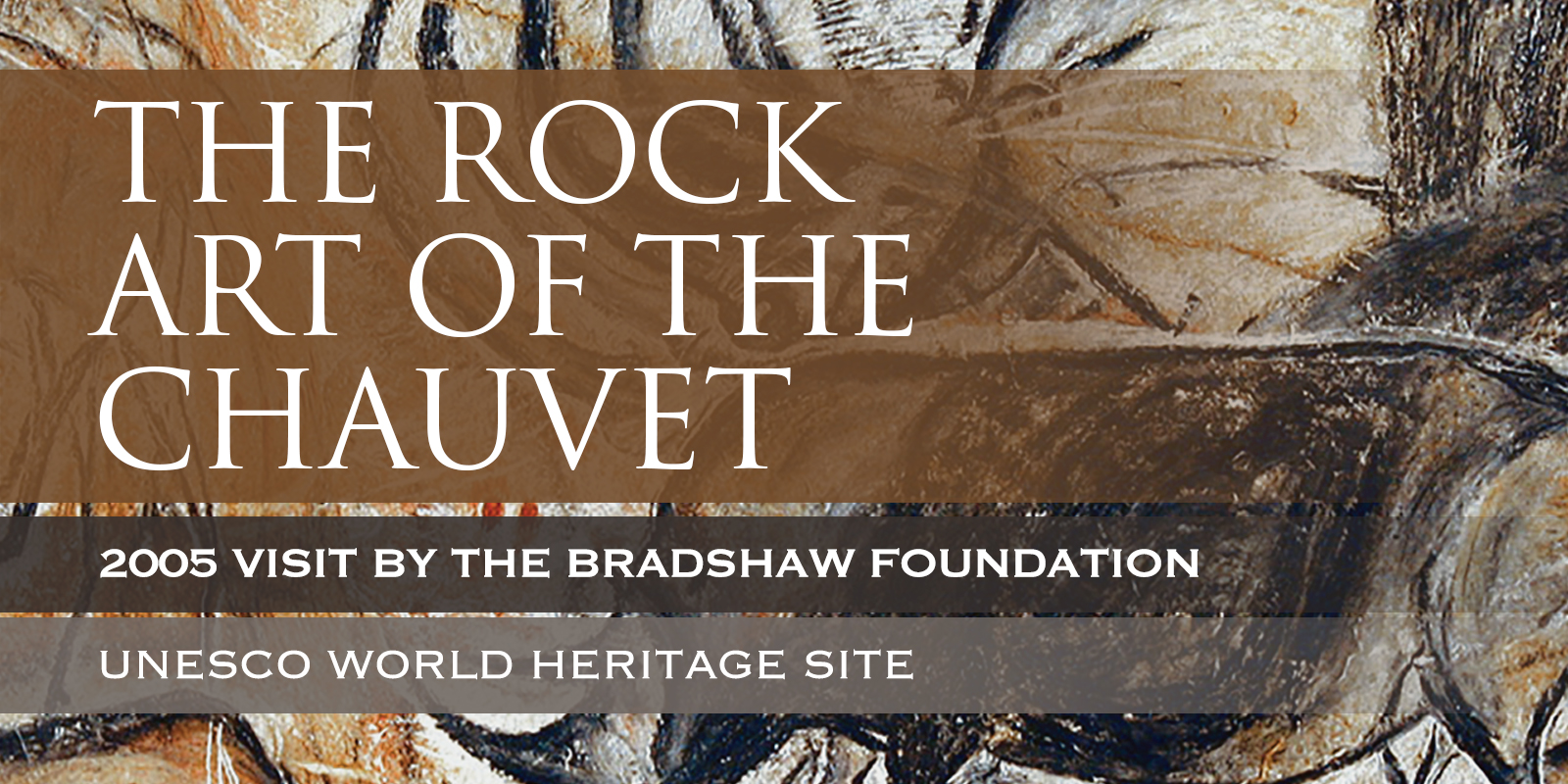
Members of the Bradshaw Foundation investigate the ancient cave paintings of the Chauvet Cave in France, under the guidance of the Founding Project Director Dr. Jean Clottes.
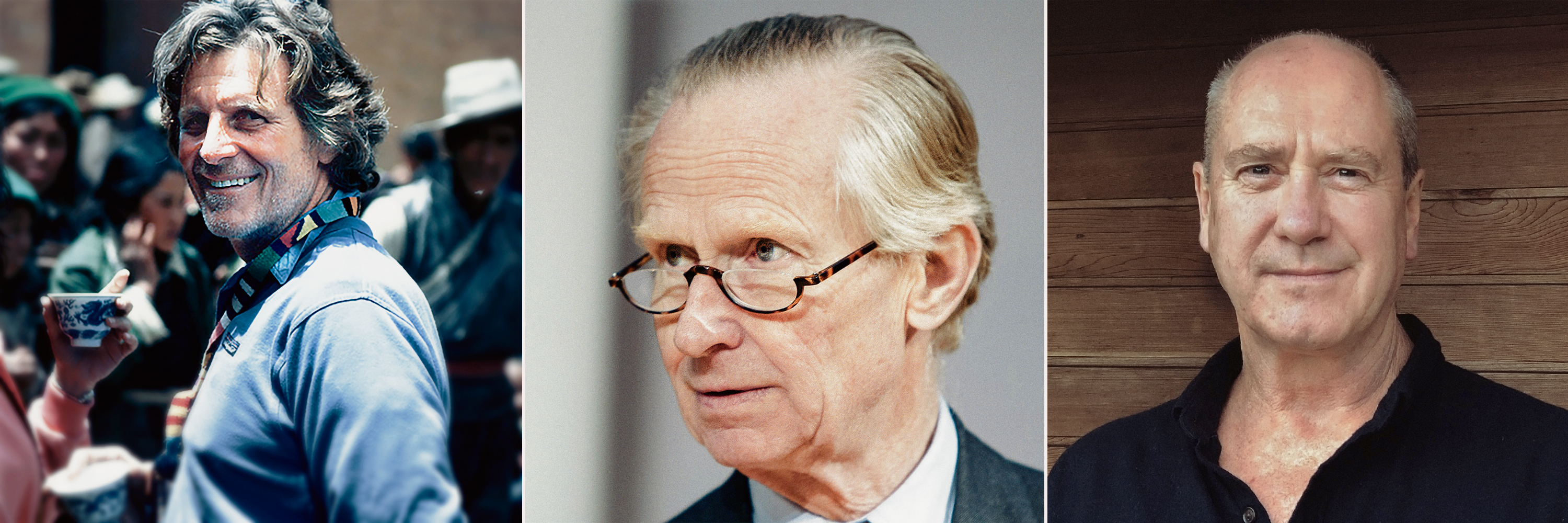
In May 2005 members of the Bradshaw Foundation were afforded the rare privilege of an extensive tour of the Chauvet Cave by the Founding Project Director Dr. Jean Clottes. The party was made up of the Bradshaw Foundation President, Robert Hefner III, the Chairman, Damon de Laszlo, the Coordinator, John Robinson, and myself. Joining us was Jill Cook, the Curator of Prehistory at the British Museum.
Approaching Chauvet, the journey itself feels to be of importance. The road shadows the Ardeche River as it slowly but powerfully meanders its way through the thick deposits of white Dogger/Malm carbonates and olive green foliage. As the road climbs, the deep gorge becomes progressively more impressive, until one reaches the significant arch, an unquestionable landmark for our Palaeolithic predecessors. It is these soft carbonates that allowed the Ardeche River to cut through and form this grand arch and abandon its former oxbow to a fertile field and small, sheltered valley so suitable for both people and animals of the time.
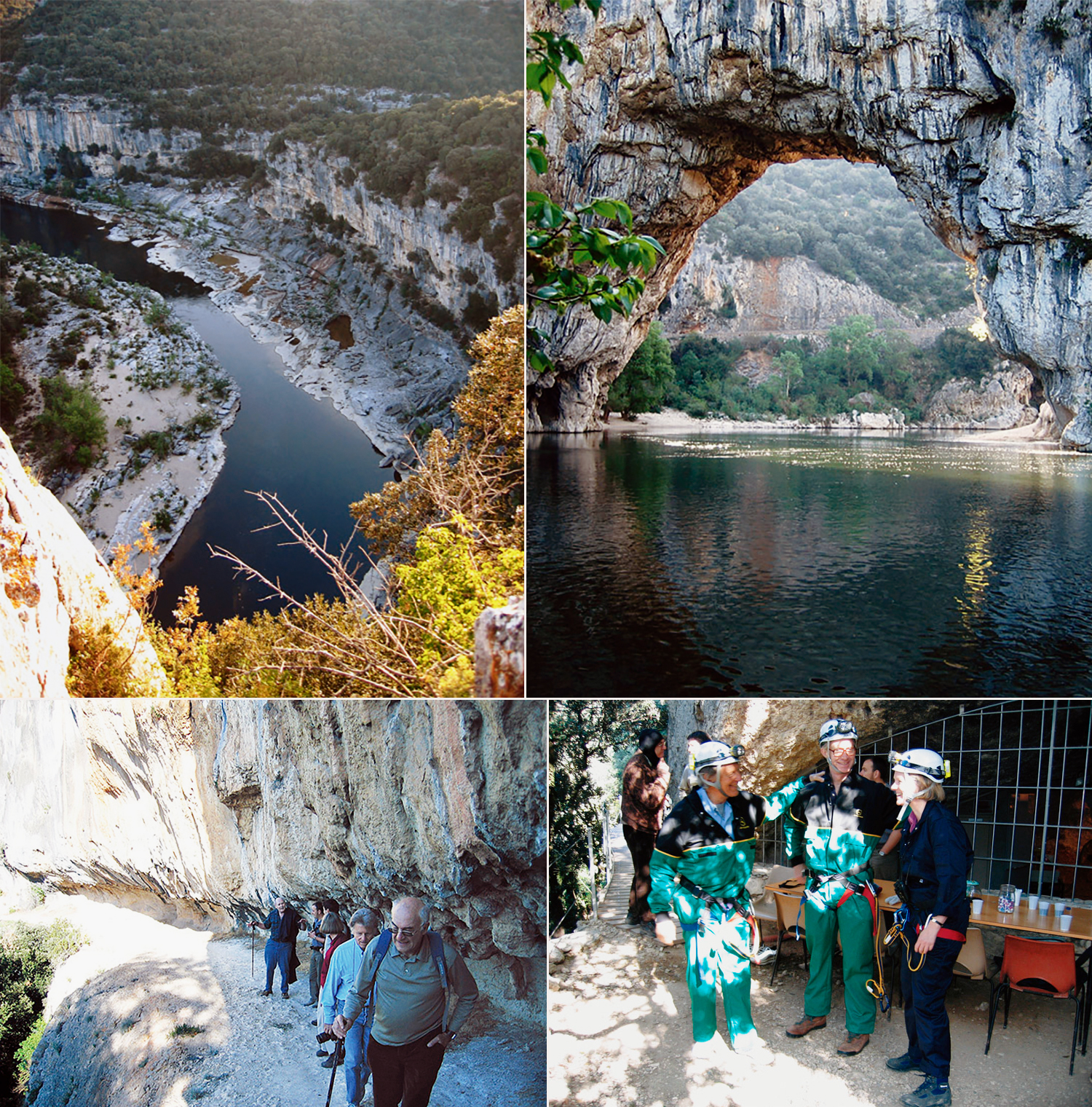
The original entrance to the cave had been concealed by subsidence millennia ago. The new entrance, discovered by Monsieur Chauvet et al in 1994, lies just above. A neighbouring cave 25 metres away, surveyed and found totally empty, has become the storage unit for the Chauvet survey equipment. Here we kitted up. And as divers, free-fallers, all atheletes, all combatants, know, kitting up stimulates the adrenal gland. Ready to begin.
In all candour, there was general nervous laughter - the prospect of being locked in to a subterranean sealed unit mixed with the imminent confrontation of the oldest known art of Humankind was very surreal.
And so into the cave. John Robinson, who had been into the cave with Jean Clottes in 1999 and 2001, joined us on the trek to the entrance. He was to film the group prepare and enter. The two hours he spent overlooking the valley in the fierce Mediterranean sunshine, knowing that we were beneath in a cool, dark, alternate world, was by all accounts an exillerating experience - 'initiation' comes to mind. The initiation took 3 hours.
The group retreated - quietly, humbly, and proudly - to the hotel. A late lunch heralded a welcome release of emotion, as each recipient described his and her ebullient reactions to this extraordinary place. Jill Cook exclaimed "I have been lecturing on Chauvet Cave for 10 years, and now I have actually seen it!" Had her feelings changed?
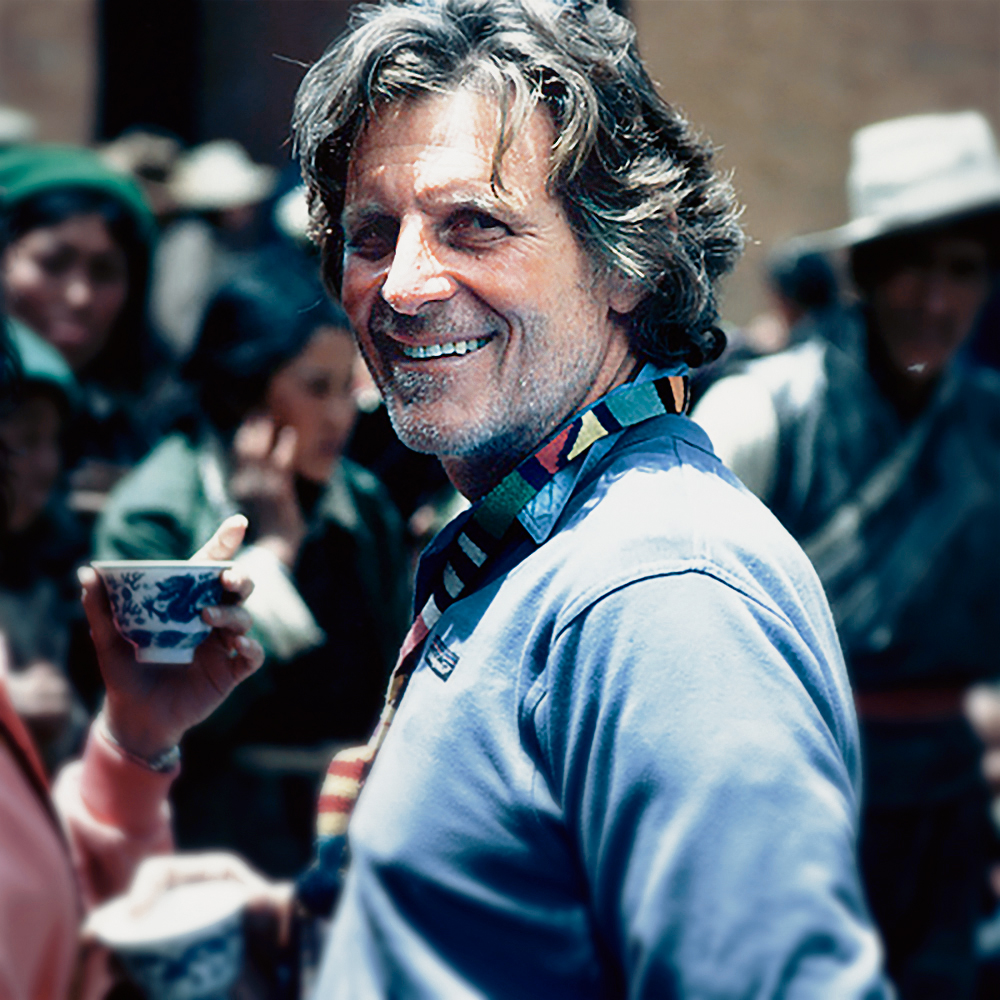
Protected and surrounded by small mountains shot through with caves, vugs and grottos. This small piece of France must have been unique within the known lands of the Paleolithic people of the region.
So with the original discovery of the spectacular cave system we now call Chauvet, and its plethora of supernatural shapes, its first explorers were literally transported to another world that was soon to become a great "cathedral" of its times.
People:
Elite, disciplined, well-trained artists/shamans, possibly leaders of a cult of spirituality of knowing the "non-natural" Other World that elevated their status to a super-hierarchy of their times.
I would speculate that their time in the caves took them to inner levels of superhuman feelings that gave them great confidence and set them apart among their people that they then shared with a chosen few; an air of difference, of status, of leadership.
Thus, the area of the oxbow, Pont d' Arc and Ardeche River became the Vatican or Mecca attracting pilgrims of Paleolithic times, possibly for over 5,000 years. The Chauvet caves became the inner sanctum or Sistine Chapel. A number of thoughts and facts lead me to the conclusion that Chauvet was a holy/spiritual/elite place where rituals were practiced, probably with lights and music that added to the magic, just as they do with gatherings today.

The fact that the art is of such extremely high quality, with many single lines and exhibiting the artistic sensitivity of Picasso (i.e., the backs of the pair of 2.45 meter lions each drawn with one line), yet no practice was to be seen; only accomplished works of art, often defined by one sensitive line, and thus the works of a great talented and practiced artist.
Discipline and control was practiced, as only a very few of the many possible drawing .sites were used, but in each case, the most special as to their form, location and evoked feelings
Unlike other "rock art" sites, with handprints, scratches and other marks littering every possible space, the "shamans", the elite artists/spiritual practitioners of the Chauvet, exercised discipline and control, as evidenced by the fact that only such special locations were painted, and this in spite of the fact of the evidence of children being present. These very special spots must have been held in great esteem as exceptionally holy and spiritual.
As there were no human remains, yet those of literally hundreds of cave bears and a few wolves, I would venture that humans were not in occupancy during the winter bear hibernation and therefore the periods of human habitation were special, probably late spring and summer, and represented an annual pilgrimage or special spiritual occasions within the Other World of the caves. These thoughts lead me to believe Chauvet was a long-term center of some type of spiritualism practiced by these Paleolithic people, and if the exceptionally high quality and sophistication of the art is an indication, as it should be, then the spiritualism practiced by these people was equally sophisticated and well developed; certainly, an indication of what we call civilized.
Again, in my mind, this leads to the conclusion of a hierarchical class of elite, accomplished, practiced and talented shamans of the Pont d'Arc. Of course, I wonder what spiritualism was practiced. We will never know, but certainly there are clues.
First, the great rooms of the caves were themselves a totally different world full of what must have seemed supernatural shapes and forms, with rarified air to breath and without any natural light. The held torches would cast ever changing light and shadow on this sparkling (calcite crystals) mystical world.
This environment was a non-world within the earth. A place of birth and rebirth, combined with unique physical phenomena of beauty, sensuality and sexuality, evoking extra human inner-feelings, a place where once visited, following the "rights of entry", one would never again be the same. Hence, an elite; a shaman and a leader of the population.
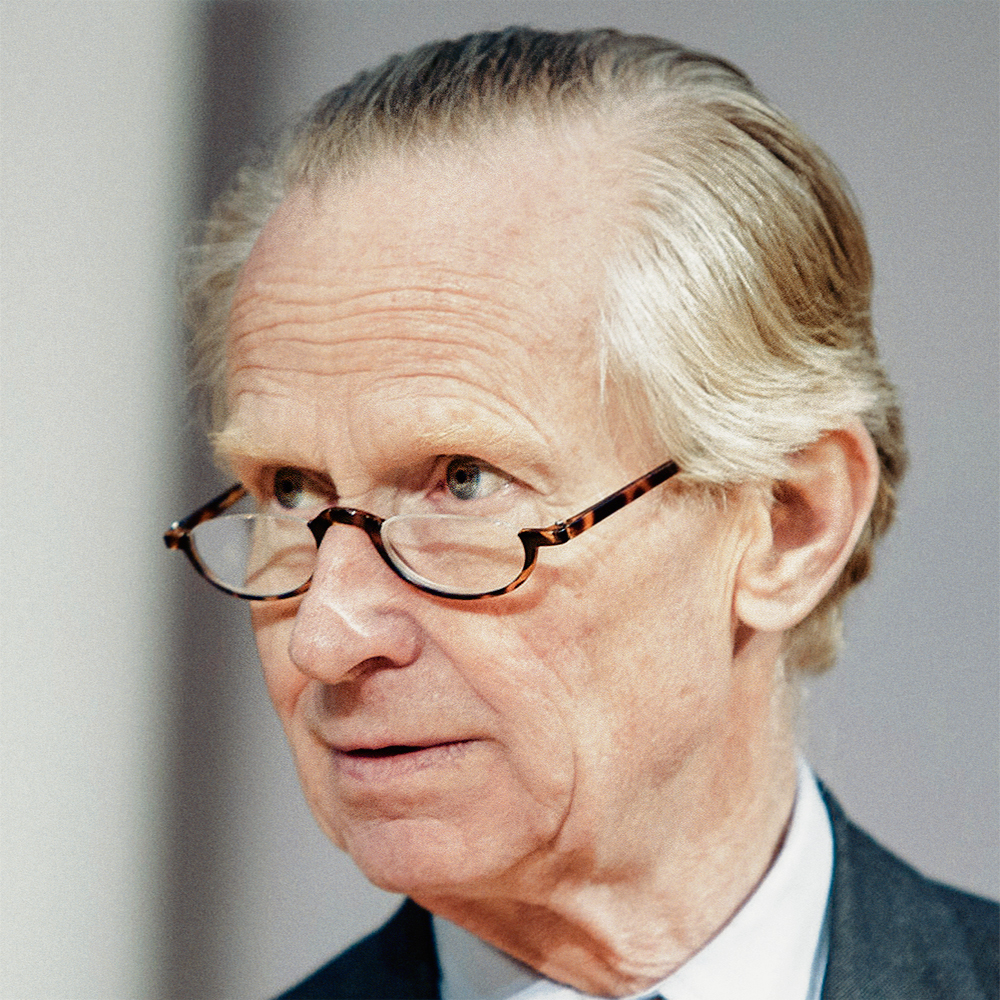
My journey to Chauvet started with the sight of ancient rock paintings in Australia and the development of a fascinating enquiry into the origins of artistic man. A fascination shared with John Robinson and Robert Hefner III, which led to the creation of the Bradshaw Foundation some 13 years ago.
Since then many interesting and exciting archaeological sites have been explored on expeditions often led by Jean Clottes, who was the architect of this visit, our guide and mentor. Robert Hefner III and I were accompanied by Peter Robinson, the Editor and Project Controller of the Bradshaw Foundation.
We were also honoured to be accompanied by Jill Cook, the doyenne of prehistory at the British Museum, and a new member of the Bradshaw Foundation Advisory Board.
To have Jean and Jill, two of the world’s leading experts on the subject, with us for dinner on the previous day, during the expedition, and for a post expedition analysis was a privilege that is unquantifiable.
The journey itself along the Ardeche to Chauvet is in its own right an extraordinary road. The river Ardeche cuts a deep gorge in the limestone hills that creates an eerie beauty all of its own.
The river, in a sharp bend, has carved its way through the mountain, creating a huge limestone arch, a magnificent watery gateway to the plateau in front of the caves.
Today the caves are approached by walking along a fault line in the rock to an entrance hidden from view. In prehistory, before the landslide that blocked the old entrance, one can speculate this vista would also have been magnificent.
The procedure of dressing in overalls and kitting out in helmets, lights, security harnesses and specialised boots is exciting but even entering the cave through steel doors and airlocks and descending through complex levels attaching one’s security harness to safety ropes, does not warn the mind that it is about to enter an awe-inspiring cavern.
The first chamber with its pristine covering of calcite un-dulled by organic growth, so usually found in caves today, sparkles like diamonds. Looking up one sees a clear outline of a turtle, as though it was swimming above one in the rock formation.
Walking along stainless steel gantries that protect the floor of the cave from modern intruders, one is left speechless by the beauty of the stalactites, stalagmites and translucent curtain stalactites that sparkle and glow in the helmet lights.
The second chamber is huge; the floor is dented with bear hollows, the first signs of habitation. The skulls of these huge bears, their bones and claw marks are everywhere; an eerie and bizarre sight. Some of these animals were 8ft tall; it must have been nerve racking entering a cave at the end of the winter hibernation. But again one is still totally unprepared for the first panels of drawings, the evidence of a sophisticated human presence.
Entering the third chamber and looking back one sees a charming naïve owl looking over its shoulder at you.
The first chamber with its pristine covering of calcite un-dulled by organic growth, so usually found in caves today, sparkles like diamonds. Looking up one sees a clear outline of a turtle, as though it was swimming above one in the rock formation.
Walking along stainless steel gantries that protect the floor of the cave from modern intruders, one is left speechless by the beauty of the stalactites, stalagmites and translucent curtain stalactites that sparkle and glow in the helmet lights.
The second chamber is huge; the floor is dented with bear hollows, the first signs of habitation. The skulls of these huge bears, their bones and claw marks are everywhere; an eerie and bizarre sight. Some of these animals were 8ft tall; it must have been nerve racking entering a cave at the end of the winter hibernation. But again one is still totally unprepared for the first panels of drawings, the evidence of a sophisticated human presence.
Entering the third chamber and looking back one sees a charming naïve owl looking over its shoulder at you.
In spite of the environment this Palaeolithic civilisation produced exquisite and sensitive drawings in charcoal, ochre and sometimes in relief on the cave walls. They appear to be at one with the animals, who are not threatening, much as modern man is not frightened of the traffic in Piccadilly. In places they used the natural rock surfaces to give the illusion of three dimensions to their pictures.
nimals race across the surfaces, others pair off and in some places appear to fight.
The images are clear but interpreting the whole is difficult or impossible. The scene does not form an integrated picture. Were the artists focused on depicting one animal at a time?
Most extraordinary of all, however, are the creatures that emerge from large fissures in the rock as though they were metamorphosing out of the dark recesses of the mountain. Here there seems to be a theme but again one has to be careful. Are we imposing our way of thinking on a society that lived in an incomprehensibly different world?
Taking the left fork in the cave system following the direction of a beautiful panel of horses one comes to a stop.
There in the middle of the arch of the cave is a grey stone block that appears to have fallen from the ceiling, surrounded by amber red calcified bear skulls. On top of the block, projecting forward is the skull of a large bear. I can only, with difficulty, leave the question of "Who, When and Why" alone. We have no insight into these extraordinary peoples' thinking; let’s not impose our need for answers by projecting our foibles on to them.
One can see, without going further, that the bear was an important factor in these peoples' lives.
Standing in flickering torchlight, the ambient temperature and absolute stillness deprives the senses of the normal background radiation of sounds and movement that is our constant companion in the modern world. There is also a slight shortage of oxygen which dulls the senses. You can hear the walls; and the pictures induce a sense of movement, even smell, and perhaps a little fear. One is allowed to admit such feelings among friends?
As well as the cold and less than friendly animals, one also has to wonder what it was like to meet Neanderthal man. He also had settlements in the area.
To visit the cave by firelight must have been awe-inspiring and wholly spiritual, to a point that we cannot conceive of, in our modern, affluent and relatively safe world.
For us, the descendants of these great human pioneers: we have experienced something that bestows on us privilege and an insight into life that must be cherished with humility.
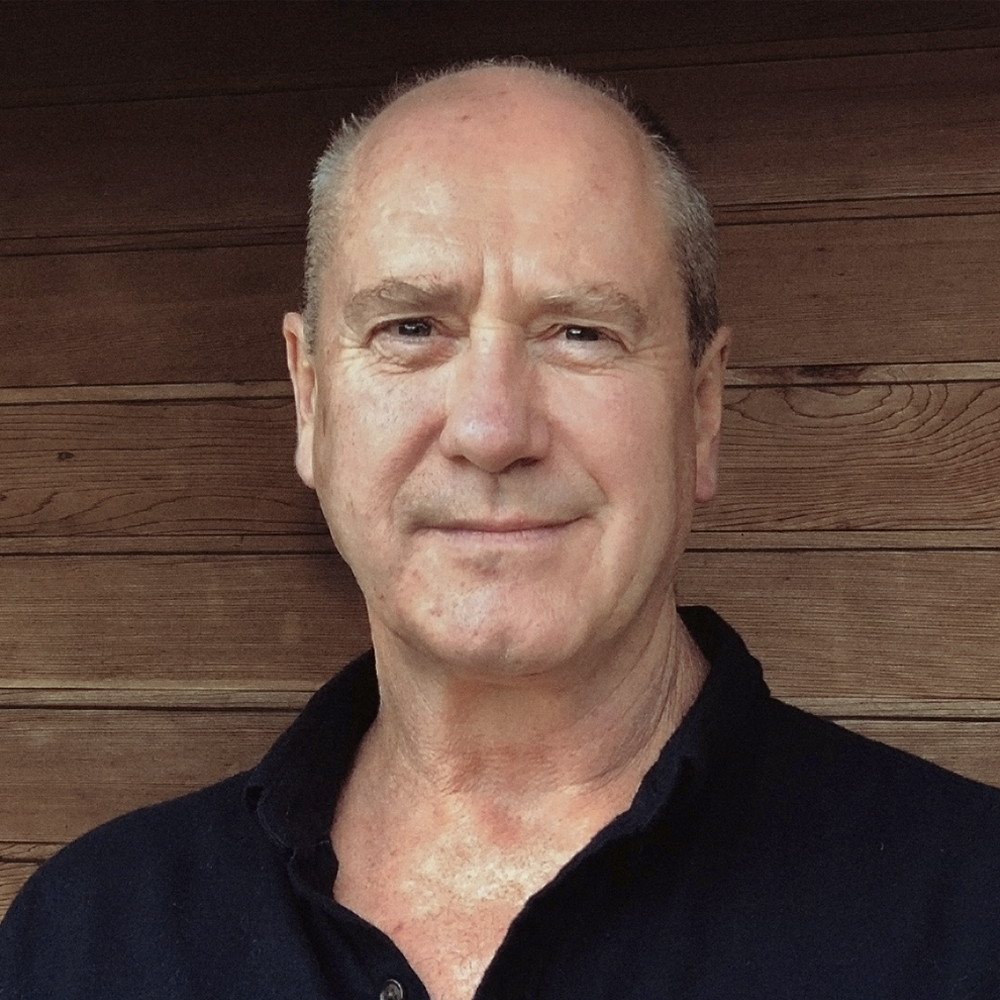
However, the chasm between an intellectual appreciation and an emotional experience is very deep. On entering the cave, the images were immediately and effortlessly more sophisticated and poignant than imaginable.
The layout of the images, within each gallery as well as from gallery to gallery, was so striking that it led me to believe that considerable planning had gone in to this. Planning that took place over millennia. Moreover, the natural beauty of the chambers played a constant trompe d'euile. Intriguing shapes on the glittering rock surface continually suggested the presence of some entity, whilst at the same time stirring up anticipation of something man-made to view. Or was that just my own anticipation? Ironically, the first set of drawings appear totally unannounced, which ofcourse emphasized their impact.
The galleries were created with a modern sense of minimalism. A large chamber, for example, is sufficiently filled with a solitary painting - the Red Bear. Nothing in the cave felt unnecessary, which only added greater weight to what was there. Moreover, and to enhance the minimalism, there were no errors, no practice marks.
Secondly, the cave gave off a strong fresh sense of privilege. Surely Chauvet was never meant as a thoroughfare, or an art gallery. I think you were chosen. I am aware of often referring to 'them' and 'us'; 'ancient' and 'modern'.
Actually, the visit brought out the Palaeolithic in me. Or was it more that the cave did not feel old at all, but instead fresh, contemporary, and alive. Echoes of the last Palaeolithic conversation around the bear skull alter still lingered.
Merci Jean.
→ Rock Art on UNESCO’s World Heritage List
→ Colloquium - France/Spain October 2019
→ L'Atlas de la grotte Chauvet-Pont d'Arc
→ The Final Passage
→ The Final Passage - FAQ
→ France Rock Art & Cave Paintings Archive
→ Chauvet Cave
→ Lascaux Cave
→ Niaux Cave
→ Cosquer Cave
→ Rouffignac Cave - Cave of the Hundred Mammoths
→ Bison of Tuc D'Audoubert
→ Geometric Signs & Symbols in Rock Art
→ The Paleolithic Cave Art of France
→ Dr Jean Clottes
→ Bradshaw Foundation
→ Rock Art Network
